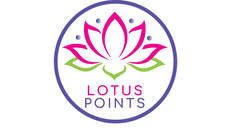Background
I practice modern 'Western' reflexology principles, that are based on zone therapy, inaugurated by Dr Fitzgerald at the beginning of the twentieth century. This was later developed by Eunice Ingham, who is considered to be the mother of modern reflexology. Needless to say, all of their findings were inspired and equivalent to the ancient Chinese reflexology, which is based on the principle of Yin-Yang, meridians, and the flow of five elements within the body. There are a lot of overlaps, but the most pragmatic difference is that the modern 'Western' reflexology is practiced as a supplementary treatment to the medical therapy, and is by no means used to diagnose problems. The client's preference regarding the intensity of the pressure is respected, and the client's comfort is always put in the first place.
Hand or Foot reflexology?When you look at the anatomy of hands and feet, you can easily notice that the fingers comprise a lot of hand's volume, while the toes do not. Also, it is easy to move fingers one by one, but not the toes. The fingers may be spread widely, while some people can barely put a finger between their toes. This articulation of fingers implies that the volume of muscles and connective tissue is proportionally greater in the hand. Additionally, hands are not as 'deep' as the feet, i.e. there is less distance between the dorsal and plantar side of the hand than of the foot. There are more nerve endings on the soles of the feet than on palms, but the skin is much harder on the feet.
|
When referring to the reflex charts, it is easy to conclude (due to the different anatomy) that the head and neck reflex points on the hands are much broader and accessible. It is also easier to access the sides of the fingers, and the reflex points of thyroid on the thumb, ear, eye, sinus, neck and lymph reflex points on and between other fingers. However, the reflex points below the shoulders or below the diaphragm line are much wider and less packed on the foot. Although the upper body organs of the first zone are much easily accessed on the hand, the spine, especially the lumbar and sacral areas, as well as the sciatic nerve, are much better observed and easier to pinpoint on the foot.
|
The treatment differences:
Because of the presence of larger muscle and soft tissue, the reflexology treatment of the hand will dedicate the time to relaxing those muscles and tendons as well as warming up the joints, before actually working on the reflex zones. Due to the presence of muscle tissue, the reflex points lie closer to the bone, so the pressure should be greater when treating the hand. It is also possible to achieve this with 'press and release' technique, which includes applying pressure with a thumb and index simultaneously on both dorsal and plantar side of the hand at the same reflex point.
If the client's issues are predominantly in the upper body area (shoulders and above), it is good to treat the hand, but if the client suffers from pain or conditions that involve organs below the neck, it will be more effective to treat the foot.
Lastly, it is worth to note that many people suffer from bunions, fungal infections and all sorts of nasty things on the feet, so until that is sorted, and to avoid any undesired pain (e.g. While working on the bunions), it is better to opt for the hand reflexology. Some clients are simply ticklish and cannot stand to have fingers on their soles, so in that case it is good to start with the hands, until the client reaches the level of relaxation and trust, after a few treatments, to be touched on the feet.
Sometimes, it is practical to show skeptical potential clients a few techniques on the hand, and make them understand what reflexology is. The hand does not wear a sock or a shoe that needs to be taken off, so it is easier for quick or promotional demonstrations.
Because of the presence of larger muscle and soft tissue, the reflexology treatment of the hand will dedicate the time to relaxing those muscles and tendons as well as warming up the joints, before actually working on the reflex zones. Due to the presence of muscle tissue, the reflex points lie closer to the bone, so the pressure should be greater when treating the hand. It is also possible to achieve this with 'press and release' technique, which includes applying pressure with a thumb and index simultaneously on both dorsal and plantar side of the hand at the same reflex point.
If the client's issues are predominantly in the upper body area (shoulders and above), it is good to treat the hand, but if the client suffers from pain or conditions that involve organs below the neck, it will be more effective to treat the foot.
Lastly, it is worth to note that many people suffer from bunions, fungal infections and all sorts of nasty things on the feet, so until that is sorted, and to avoid any undesired pain (e.g. While working on the bunions), it is better to opt for the hand reflexology. Some clients are simply ticklish and cannot stand to have fingers on their soles, so in that case it is good to start with the hands, until the client reaches the level of relaxation and trust, after a few treatments, to be touched on the feet.
Sometimes, it is practical to show skeptical potential clients a few techniques on the hand, and make them understand what reflexology is. The hand does not wear a sock or a shoe that needs to be taken off, so it is easier for quick or promotional demonstrations.



